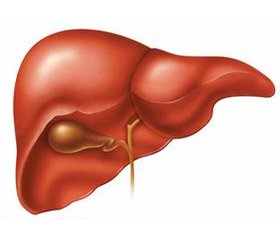Журнал «Актуальная инфектология» 1 (6) 2015
Вернуться к номеру
Endotoxemia in patients with liver cirrhosis
Авторы: N.V. Maksimtseva, D.S. Panieva, D.M. Popova - Donetsk National Medical University named by M. Gorky;
Department of Infectious Diseases and Epidemiology; Supervisor: professor, MD Domashenko O.N.,
Donetsk, Ukraine
Рубрики: Инфекционные заболевания
Разделы: Клинические исследования
Версия для печати
liver cirrhosis, lipid peroxidation, endotoxinemia.
Introduction: The relationship between infection and manifestation of endotoxemia in patients with liver cirrhosis (LC) is described in literature. Bacterial or viral agent, penetrating into the patient's body starts a cascade of immune-enzyme reactions. As a result, the cytokines are released and activate processes of endotoxemia and "oxidative stress". Bacterial translocation in patients with LC leads to chronic latent infection and exhaustion of the immune system with with the formation of "vicious circle" and the development of immunodeficiency on the background of chronic endotoxemia. However, the final relationship between cirrhosis, endotoxemia, «oxidative stress» and infection in patients with liver cirrhosis has not been proven.
Materials and methods: We examined 10 patients were hospitalized in the infectious disease department of Donetsk Central Cities Clinic №1. The diagnosis of LC was based on clinical and laboratory tests and the results of ultrasound examination. For detection of endotoxinemia patients with liver cirrhosis were identified levels of ammonia, lactate dehydrogenase, medium molecular peptides, cholinesterase, lactate, MDA, catalase, reduced glutathione, glutathione peroxidase. The patients were divided into 2 groups. Criteria for the distribution were the markers of acute phase of inflammation: C-reactive protein and procalcitonin, according to the predictive significance of proteins of the acute phase of inflammation in patients with liver cirrhosis with infection and without. Descriptive statistics and correlation analysis have been used for statistical processing. Differences in the magnitude of the average of the two samples was determined using the t-test, cluster analysis was used to separate patients into several groups.
Results and discussion: A significant reduction in cholinesterase levels was observed in patients with a high risk of infection (2nd group), indicating a violation of protective mechanisms. At the same time, the values of cholinesterase and glutathione peroxidase, which are the body's protective enzymes, higher in group 1 compared with the 2nd group, which is a confirmation of the fact that patients with infectious complications are more susceptible to endogenous pathogens. Mean value of reduced glutathione is higher in patients with high risk of infection, indicating the role of the enzyme as the nucleophile and active reducing agent that protects cells against free radicals. The intracellular ratio of reduced/oxidized glutathione is an important parameter which indicates the level of intracellular toxicity. Thus, the data suggests that in cirrhotic patients with a high risk of developing an infection develops "oxidative stress."
Conclusions: Indicators of LC, "oxidative stress", endotoxinemia increased in the group of patients with high risk for infection (group 2), which proves a significant relationship between infection and lipid peroxidation, "oxidative stress" and endotoxemia in patients with LC. Timely examination of patients and identifying signs of endotoxinemia can prevent the development of infectious complications LC and increase survival rates.

